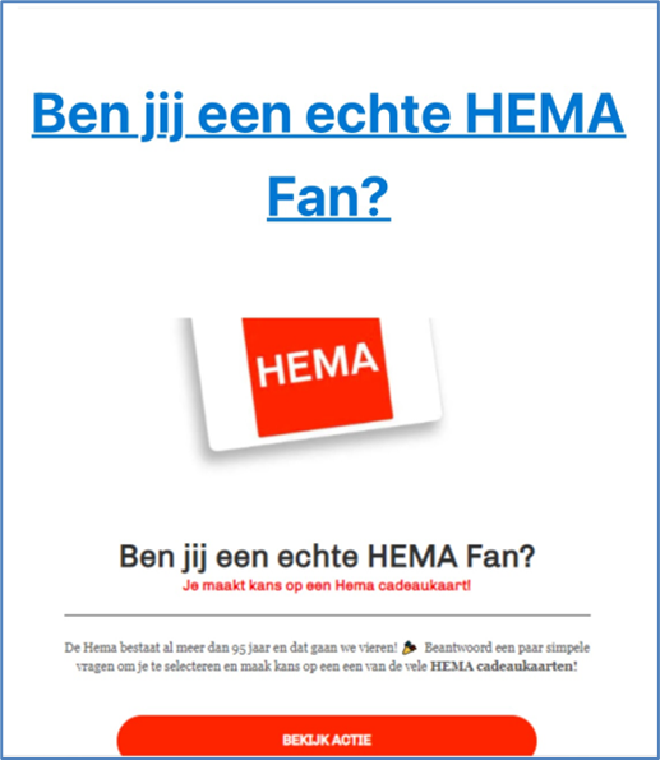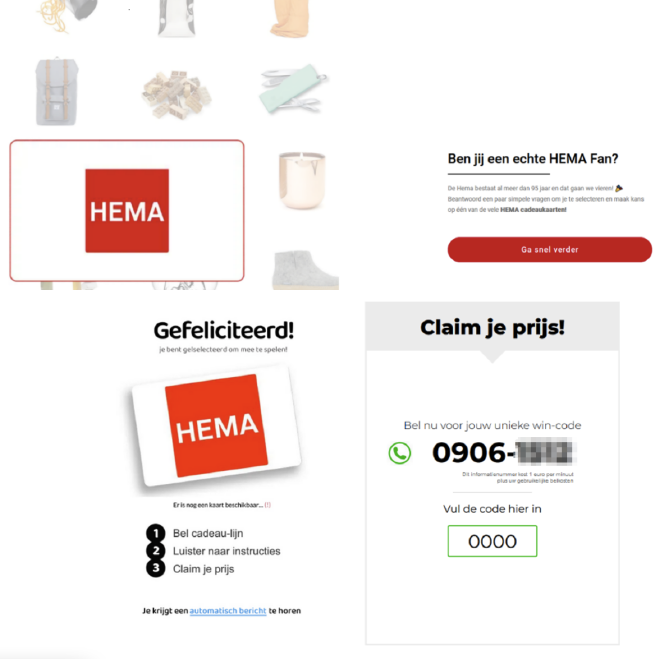Warning about phishing
Table of Contents
HEMA does a lot to keep its customers and digital systems safe. Unfortunately, HEMA and therefore its customers, often has to deal with phishing. This article shows a recent example of phishing and what you can do about it.
Phishing happens through various platforms, such as email, SMS/WhatsApp, or phone calls. Criminals use the HEMA name, logos, and even product photos without permission. With Black Friday and the holidays approaching, HEMA expects more of these types of emails to start circulating.
As frustrating as this is for HEMA and its customers, there’s little that can be done proactively. Action can only be taken once reports come in from customers. To raise awareness about the sneaky methods criminals use, HEMA would like to highlight this campaign.
HEMA fan phishing #
Several alert customers pointed out this phishing campaign to us. They received phishing emails supposedly ‘sent by HEMA’. The email asks whether the recipient is a ’true HEMA fan’ When people click the link in the email, they end up on a professional-looking phishing website.

On this phishing website, people are first asked to answer a few questions about HEMA, after which they’re asked to leave their name and email address to enter a game. However, the next step involves calling a premium-rate 0906 phone number, which costs €1 per minute. Callers are asked to stay on the line while playing the game. In this way, money is drained unnoticed, and the ‘prize’ takes a long time to arrive—if at all.

Thanks to reports from customers, HEMA was able to take action and the phishing website has now been taken offline.
what can customers do? #
If you encounter phishing, it’s best to report it directly to the Fraud Help Desk. It’s also wise to file a report with the police if money or personal information has been lost.
For more information, visit the websites of the Dutch Police and the Fraud Help Desk (look for the sections ‘Verdachte e-mail melden!’ and ‘Fraude? Direct melden!’).
Click here to read the original article in Dutch.
